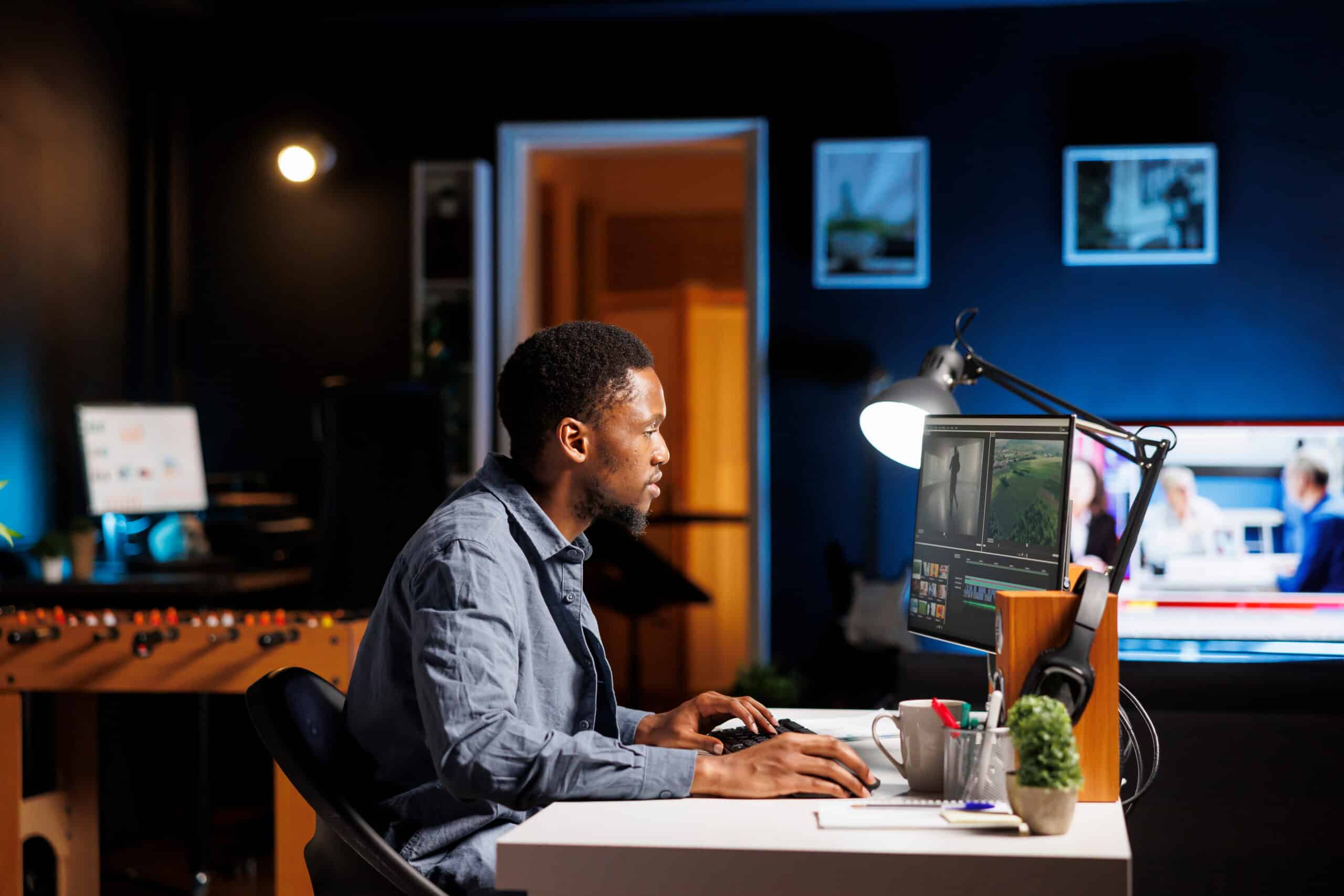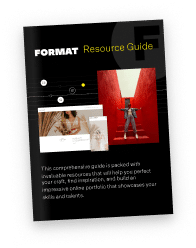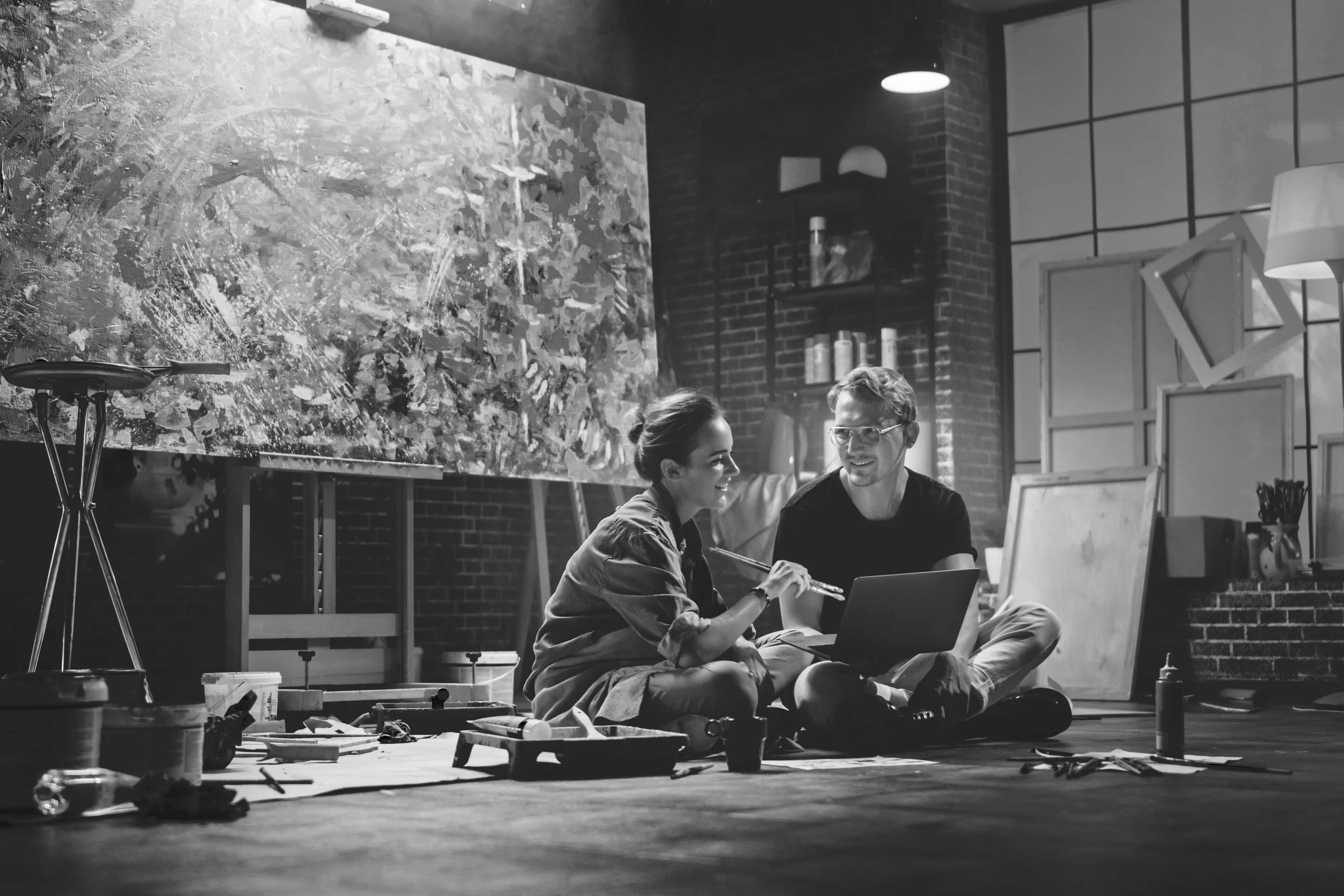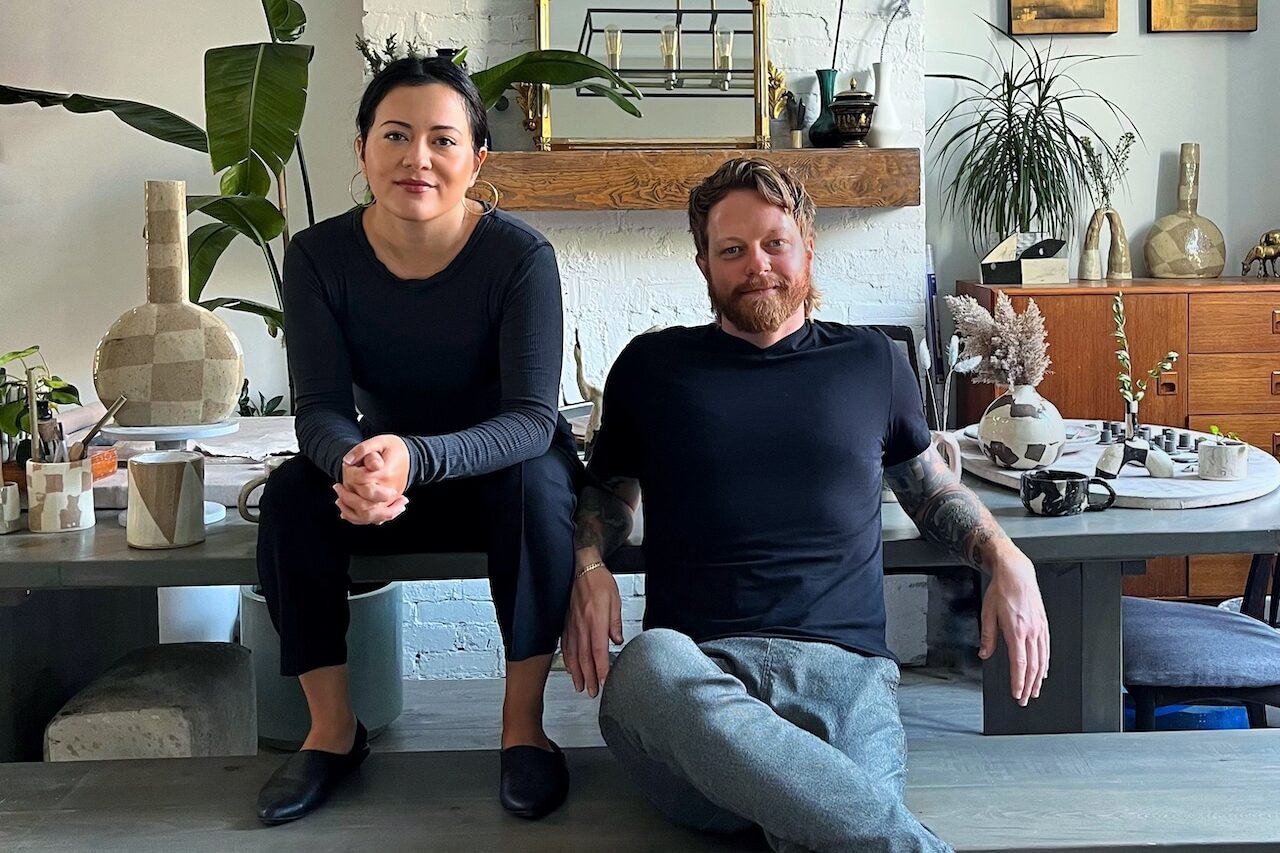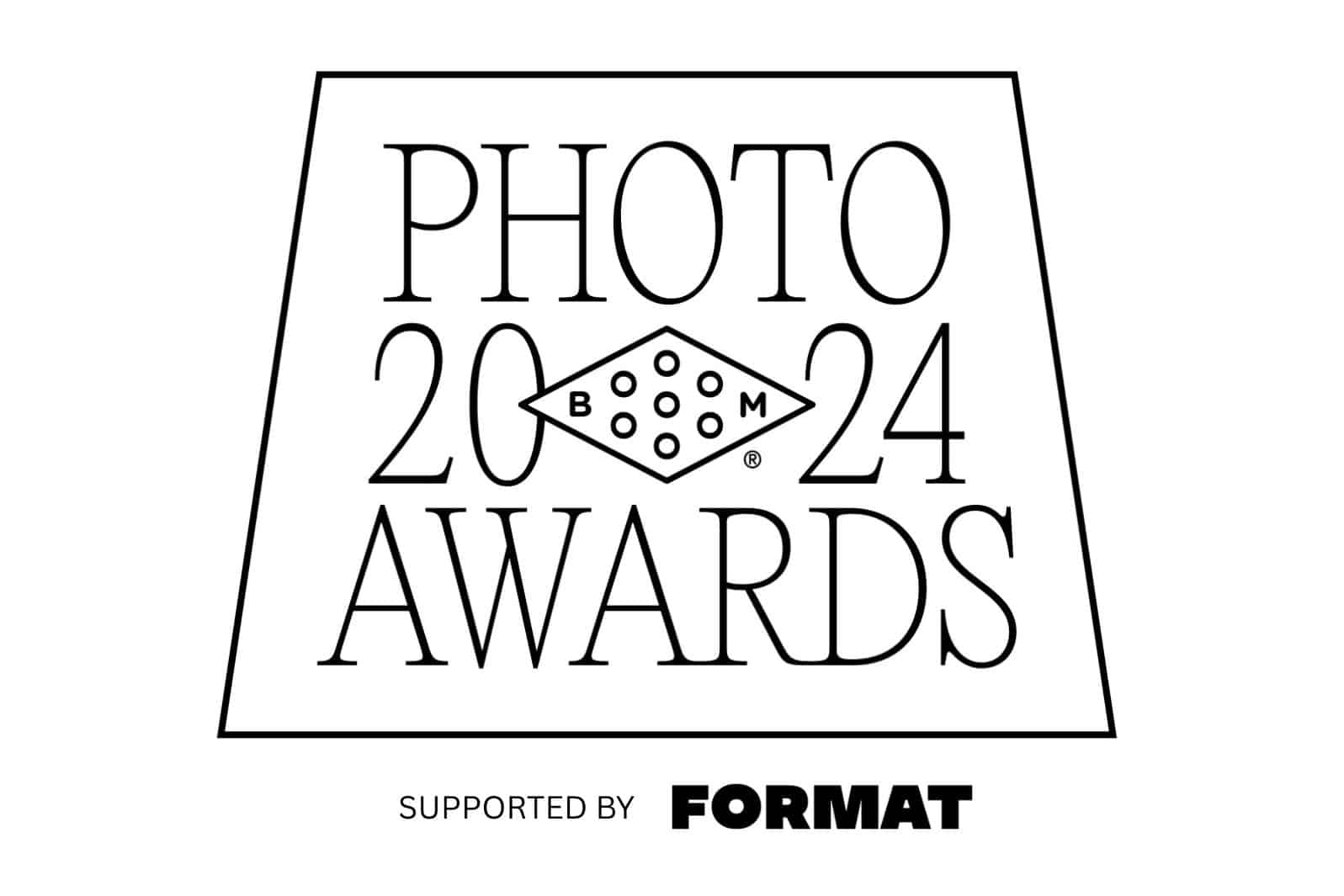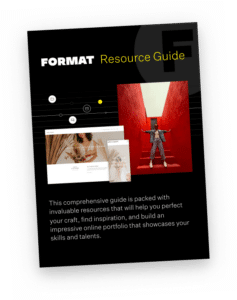As a reminder of my credentials for writing this: I was a freelancer for 15 years, and somewhat of a notorious workaholic for…all of my life. If you are me, fun is more work. This is a guide on how not to be like me.
In Our Last Installment…
We explored some of the myths about “balance,” the ones created to make you feel bad about your off-kilter existence. I also gave tips for streamlined workflows for freelancers, ensuring the work part is as smooth and short as possible.
To refresh, this juggling act is more about focus and presence than it is about unrealistically equal buckets. The fundamental guiding principle is that the quality of your time–both working and relaxing–will actually make for less time on the former, and more of the latter.
Beyond focus, there’s also Decision Fatigue which can drag down your day repeatedly and unnecessarily. Throughout this article there will be guidance on eliminating the inconsequential questions and repetitive tasks that could be pre-planned or automated. In this part of our series, we’ll get to the Life side of things where we can better focus, and eliminate life-draining decisions.
LIFE
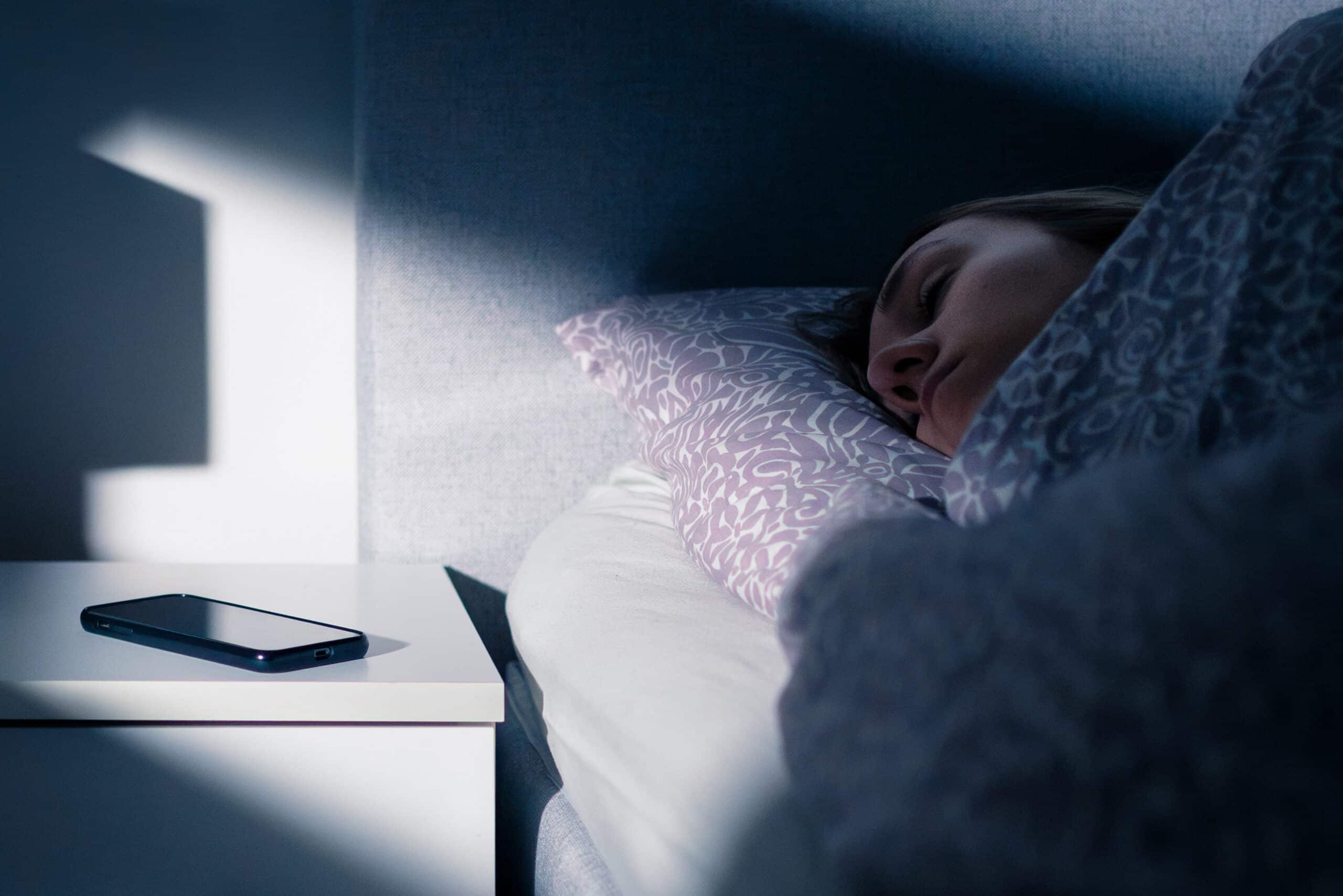
Unplug:
This is not brand new information, but while once an incredible convenience, your cell phone is now ruining your life. Not only are we distracted, but we’re riddled with anxiety from constant alerts; an abundance of information we can’t act on, and–because targeted ads are really good–phantom needs.
As a freelancer with odd hours and unpredictable bookings, you have become reachable at all times. You do not want to be reachable at all times. I don’t want client texts while in the bath, but who is at fault: my client for messaging me or me for leaving my notifications on?
Trick question: the answer is me for bringing my phone into the bath. Don’t be like me.
The cell phone goes where you go. These are the kinds of expectations we have left unquestioned until the past two years, when we really started to see pushback in the form of dumb phones, flip phones, and for the ultimate power move that doesn’t work for a freelancer at all, no cell phone. We can be more realistic and take back some of the control, set ourselves up for success by setting our phones up to function as tools with limitations.
Unplugging:
In our last installment I covered the key workflow action that will make this next part an achievable action: use a booking assistant.
Now, turn your over-stimulating but professionally-necessary smartphone into a workable version of a dumbphone. You can do this either by deleting all unnecessary items to get the clutter down, or using an app. This spares you from having to invest in a new device.
It takes time to get used to the intentionality required to open apps… and if you’re using your phone intentionally, awareness of this begins to change behaviours that are slowing you down and prolonging work-time–like scrolling social media and click-bait. Remember these things have to earn your attention by actively improving your life and work.
Additional tips:
Make use of the Focus and Do Not Disturb modes.
Set expectations with clients about hours you’re available for contact.

Eat: A Simple Thing Made Complicated by Decision Fatigue and Actual Fatigue
Food is fuel, food is mood, and though delicious, food comes with a vast array of choices. For those of us fortunate enough to have this good problem of abundance, what to eat is at least a thrice-daily question. It’s one of the most time-consuming, angsty decisions to make because you’re likely answering that question while you’re hungry, which is easily overwhelming. To add complication: you may also have children, pets or a selectively helpless partner to feed.
Then there are the other risks; dietary restrictions and food sensitivities can make it fraught with some actual danger. The work fallout to consider; the closer you get to hangry, the closer you are to production shutting down. There’s also the clear perils of freelancing; being your own manager is like being your own parent. No one can stop you from working in bed until 2am, eating a small bag of chips and a chocolate bar for dinner, or chasing them with an energy drink.* You can save yourself from yourself.
If you love to cook and know how to shop and make meals with ease and the kind of focus necessary to complete these tasks quickly and decisively, you can skip this part. For the rest of us who may for whatever reason find this aspect of living a challenge, I have some tips for different needs:
*Surprisingly, an unsustainable practice.
Set a Breakfast Rotation
Like your work uniform, breakfast can be one of a few things on rotation in whole, or in components. It’s one of the first decisions of the day and not having to expend any energy on it is deeply freeing. It doesn’t matter what it is, but it should be easy for you, and if you’re a person who loves novelty, something you can switch up a little to keep from going crazy. Bonus if you can take it with you on the way to a gig.
I like eggs, I like overnight protein oats. You do not have to be like me–but this is definitely an area which I’m not encouraging you not to be like me. I’ve actually gotten this food thing down. I have so much more time to overwork now.
Grocery Delivery
Make a list, skip the trip to the store, and place an order with a nearby grocery store. While this comes at a premium cost, two factors render them negligible:
- You will have fewer impulse purchases
- More time for post-production/design/writing up invoices
In the time you’ve saved not making that trip, you’re instead making money which, depending on your pricing structure, comes out to more hourly than the service fee.
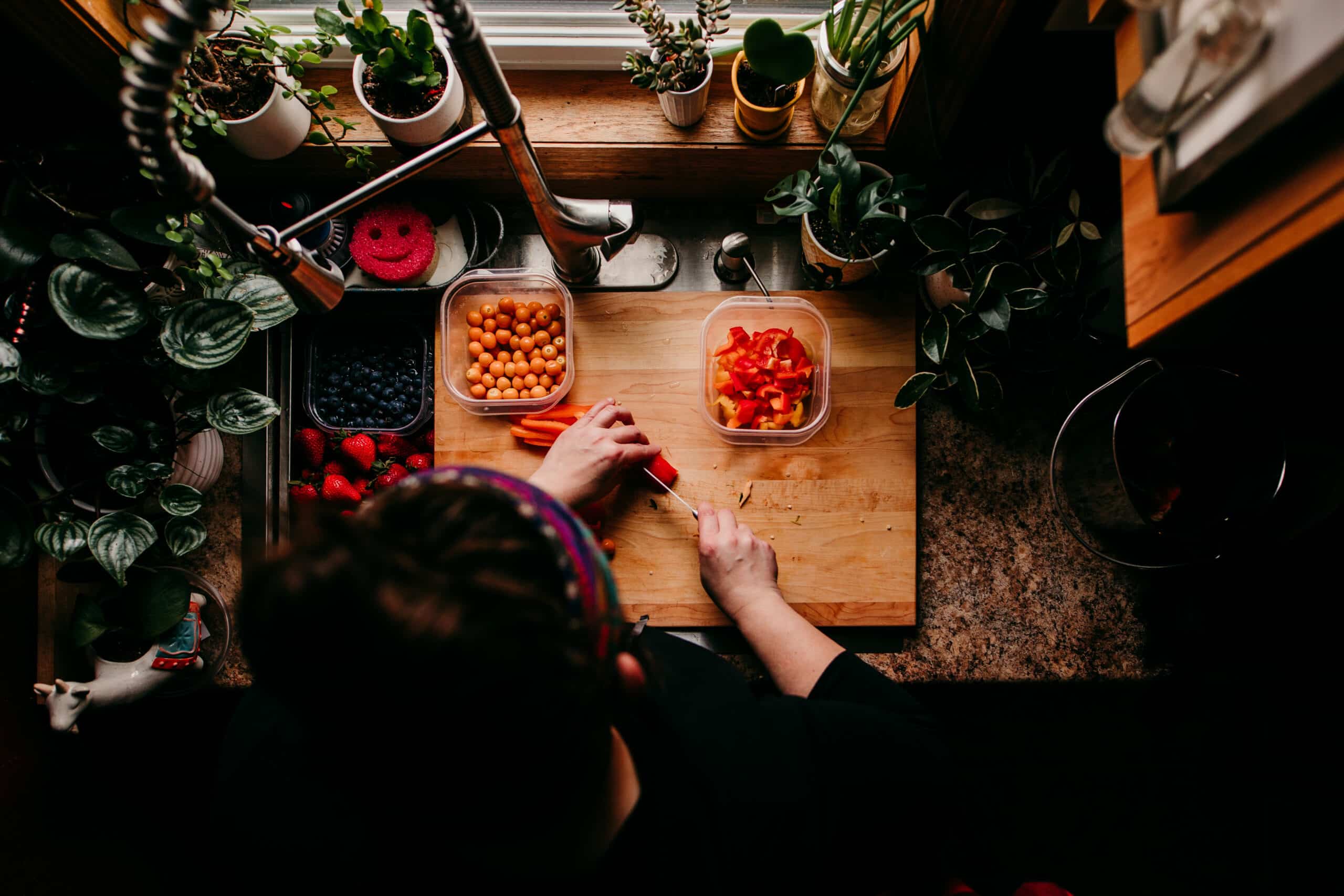
Kits + Batching: You Got Yourself a Stew Going
The next step up from grocery delivery. You’ve seen the ads and the influencers; kits with pre-portioned recipes etc, etc.
The real tip is to use this as a cheat to batch cook in the correct proportions without having to figure out yield and recipes–too many decisions. Order 2-4 meals in one week, be sure the portion size is 4-6 per recipe, and dedicate a few hours in a single day to make all recipes and all portions, freezing them. This does require a bit of an investment in containers (glass is the best and holds up) but it’s worth it.
One Sunday a month, I would cook 28 meals at once and freeze them. I made a lot of stews.
I called it Mush Day and had a theme song for it. This strategy of pre-planning saved me a couple hundred dollars a month, spared me from hanger decisions, and provided actual nutritional content.
*I would still do Mush Day if my kitchen hadn’t become my office. I don’t want to spend more time there.
Readymade
Aside from meals in pill form—something yet to be perfected—readymade meals are the height of convenience. Unless you’re really rolling in lucrative contracts, it does require a cost-analysis with data from your last three months of grocery shopping/take out/food waste to determine whether it’s affordable and makes sense for you.
If it does make sense, maybe because you didn’t catch the avocados before they went bad, or you ordered a $30 sandwich last week?* It will be one of the greatest gifts you give yourself. If you’re a multi-person household, get your other persons in on it so you can eat together without it being a whole production.
There are some services that specifically address food sensitivities so for some who get so stuck in eating the same thing because you can’t think of other things that won’t kill you, this can be a relief with variety. Having full meals on hand can also be very convenient when a client decides to come by for a lunch meeting. They usually make it easy to try out and cancel, so it’s pretty safe to see if this is a solution for you.
*In my defense, it was gluten-free and in CAD.
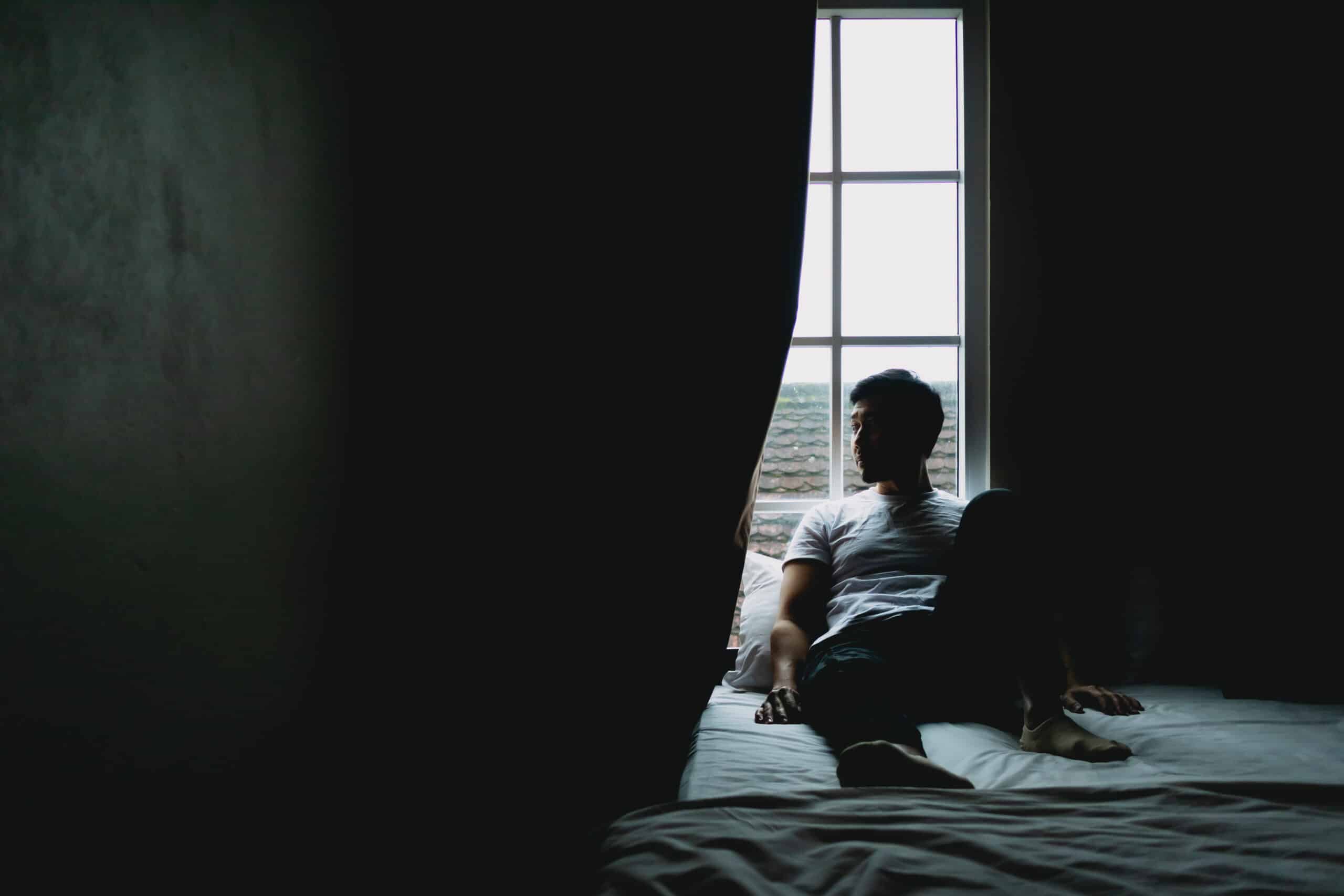
Sleep
Freelancing can wreak havoc on a routine, and the element most prone to chaos–second to chip-based diets–can be your sleep schedule. Freelancers with different niches may have to adapt to sleep patterns totally out of sync with the majority of the world. For instance, wedding and event photographers who are all about working evenings and weekends, will be collapsing at 3am.
We each have different ideal sleep times and durations, which is why it’s important to know your own optimal rest time. Make it a non-negotiable to get that time no matter your niche work window. The future burn out that you’re preventing will keep you healthier and bookable.
How to Sleep
This could be an example of a how-to out of control, but it’s pretty clear that many of us have lost some instinctual ease in executing fundamental human needs–why else would we have guides on deep-breathing?
There are some apps and tools to help with this routine, getting you to visualize what a good sleep looks like so that you don’t think that going to bed at 1am and getting up at 6am still makes sense when you miss your 10pm sleeptime.
Just to harp on the unplug piece: one key is to put your work device away.

For the Nocturnally Inclined:
- If your gig has you editing and uploading at 3am because your client expects (and has paid you for) fast turnaround or this is the nature of the work, you need blackout curtains, or sleepmask and earplugs so you can get your 7-10 hours once you’ve delivered.
- Try not to take work to bed. Even though it’s comfortable, it can keep you from delineating your space and falling asleep.
If you do take your laptop and work in bed, just like I do despite what I just wrote, because you have back pain and sitting bent into angles is a nightmare (it is), or you get into an easy flow state when lying down, try this:
- While working, light the room with more than one lamp. The lighting you use to read before bed or get ready to sleep should not be the same as your work-in-bed task lighting.
- Any emails that go out to your clients as you wrap up should be scheduled for 8am. Two reasons: 1. It will make you look sane (it’s 3am and you’re a creative freelancer, you’re definitely not fully sane but you can trick people) 2. If your collaborator/project manager/client is also a lunatic awake at that hour, sending on a delay means they can’t immediately email you back, keeping you up longer.
- Once you’re ready to sleep, reset the space: Make your bed again. Turn out any extra lights. Close the laptop, and take it to another room.
- Reset yourself: brush your teeth, wash your face, do a little breathing (I’m not writing a tutorial on this, it’s in and out) and return to your bed.
No longer your cosy office with a horizontal desk, your bedroom is once again your sleep space.
Shelter
As a freelancer, you may rent a studio space, but more likely your home doubles as your workspace. Maintaining some order and organization in the places you work and or live will help you keep your momentum when moving from one project to the next. It will also make it easier to relax when it’s time to rest.
Organization
I’m a big believer in compartmentalizing (it’s not just for trauma, It can also be an effective organizational strategy!). I love cabinets because in building them, you can customize shelf height and their function. Meaning at the end of the day I can store all of my cameras, laptops, accessories, extra monitors, stress swan, etc all in a safe place that gives quick access while also providing a clean strike of my work setup. My desk also becomes a table.
One of the lessons I’ve learned in my many years of long hours: At the end of the day, if you can still see work, you haven’t left work. So:
- If you have a dedicated studio or office in your home: close the door.
- If yours is an open space: get a room divider or curtain.
- If you have a studio space outside of your home: leave! But be sure to throw out takeout containers, you don’t want ants.
Automation
Above I wrote about the importance of keeping spaces separated if you work from home, additionally I would add some ideas for automation:
Invest to keep things running smoothly. One writer swears by the robot mop, I plan on upgrading to an automated litter box. For most of my life I refused to have a microwave, working 6 days a week 14 hours a day changed that fast. Whatever gadget will ease your home workflow, if you can afford it, or if you can’t afford the time lost to doing it by hand: get it.
Chores
At the outset of this two-part piece, I lamented that there are never solid tips in these work-life balance pieces, like after an 18 hour day, how do I get all of my laundry done?
This is for freelancers and artists who don’t have in-home laundry, because if you do, the answer is anytime you have a spare minute: it’s right there. The rest of us resent you.
As a freelancer, I think laundry is the worst, most disruptive chore.
Whether it’s in the basement of your building, or down the block, it is a significant time-suck as it’s subject to so many blockages and variables. The machines might all be taken, or they might be broken. When laundry is functional, you have to time everything around this task and leave what you’re doing to switch things over from washer to dryer or be the jerk who lets things sit. Don’t be that jerk.
Here are some worst-chore time-saving tips:
Not only time, you’ll save yourself money, and it’s good for the planet. A hardwood drying rack will last you an actual lifetime and, because nothing is made to last anymore, it will keep your clothes from disintegrating. Laundry then takes an hour for washing and you’re back home, hanging everything to dry. Aim a fan at it and you’re done, get back to work.*
Get More Clothes
Hear me out, this is not a fast-fashion solution, this is old school: get a lot of socks, underwear and t-shirts for layering. You’re getting a bunch of smaller basics to wash more regularly or, if you have a lot of them, once every two weeks. This is so you can avoid getting hard-to-launder-easy-to-destroy items, like woolly sweaters, dirty.
Wash & Folds
Early in my freelancing career when the hustle was the hardest and the money the tightest, my local laundromat closed. This was a disaster. I had to move apartments. While I waited out my 90 day notice, I tried a few things; taking an uber across town to a different laundromat, carrying a massive hamper through a park in a snowstorm to do my laundry at my friend’s place, and attempting to wash everything by hand. All unsustainable, and eventually I had to send my laundry out to a service. While it was pricey, oh how it saved time. They folded everything. They found the sock that paired with the other sock.
Like with meal kits and readymades, if this is a thing that is dragging you down, consider whether you can outsource.
*Some of these tips double as survival strategies for being just above the poverty line without any safety net. I got you.
Cleanup
As a freelancer, sometimes you’re home a lot, and sometimes you’re never home. These tips apply equally because each scenario comes with a different kind of mess. If things have gotten away from you it’s going to be difficult to relax. There are all kinds of methods and listicles for how to clean up because somehow that’s trendy now. We’re all overworked messes. Do what works for you, but try to keep it really simple and sustainable.
One month, to support my investment in new gear, I had to go hard and broad on gigs. As a noted tidy-person I did an emergency de-hoard and re-org for a musician. Like most creatives, he was actively fighting his inner chaos demon. When working with him I gave one instruction: pick up a thing that isn’t where it should be, the rule is you’re not allowed to put it down until you actually have a proper spot for it. It was memorable enough to work for him even years later.

The Economics of Ergonomics
There are some physical risks in freelancing, especially determined by where you live. As you are your own employer, you are responsible for your healthcare, and insurance. It’s shocking how many images depict freelancers as happily working away on laptops at chest height. That… will cost you.
Just for those with the misconception that all healthcare is free in Canada; we have to pay for chiropractors, massage therapists and physical therapists, so when I say that you will pay for your bad posture, I mean it. I have paid.
If you’re working long hours at a desk on a computer either doing post-production, design work, or writing, you should carefully consider your setup.
- If you’re at a desk and using a screen, you need a laptop or monitor riser at the very least, but likely also a second (third, and maybe fourth) monitor and arm to mount them so they’re adjustable.
- An external keyboard, a mouse and depending on your work, a drawing tablet will also go a long way to preserving your wrists and forearms.
- There’s not a ton of science backing up the claims that standing desks are life-changing, but if you already have back issues from lugging around your gear, you may actually hate sitting. I love standing desks, and the sit-stand desk gives you the best of all worlds.
Do Neck Exercises
Tech-neck is real. Try some easy exercises. You don’t want to be in pain during your off time.
Speaking of…
With all that screentime that comes with freelancing, there’s a lack of movement, fresh air, and daylight.

Go For a Walk
Go outside. Try to go for a walk every day. If it’s not part of your downtime, when time and equipment allows, try walking from gigs back home/studio/hotel, or to the next shoot if you’re double booking. This can do a lot for a sense of accomplishment and well-being.
Though of course, be mindful of safety, time and weather. When it’s winter, don’t risk your battery life by walking to shoots.
As a writer, you need to get your stubborn brain going, and walks can be exactly the activity you need to break out of a block, or get your thoughts in order.
BALANCE
There is no such thing as multi-tasking. Have you ever successfully done several things at once? No, you didn’t read that thing while watching that other thing, you read one paragraph and had to go back three minutes on that thing you were “watching”–only to get distracted and miss it again and go back. Doing more than one thing at a time, literally in real time, is not what balance looks like. The internet has destroyed our brains, there’s barely such a thing as singular focus, which is why you need to get into the habit of monotasking. Just…do one thing.
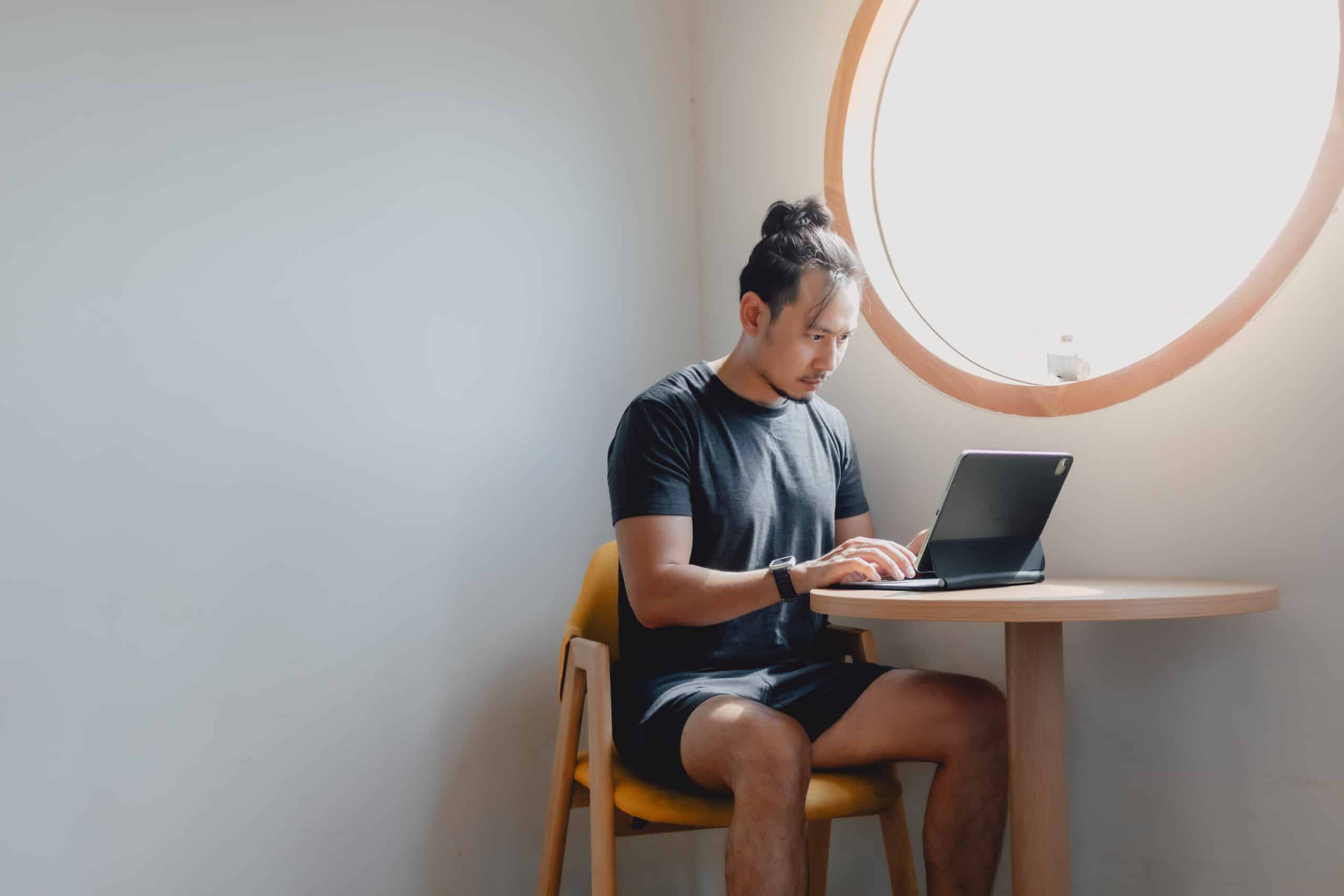
Re-focus:
Monotasking is the actual secret to getting work, chores and errands done efficiently and well…Leaving you more time for friends, family, and yourself.
Narrowing your attention to one thing can be difficult, and there are a few exceptions when it comes to distracting elements; music notably can help one get into a flow state. Because music is a supportive stimulation, not a task.
Monotasking is not only beneficial to work and life, ensuring better results or interactions, but think about how you feel when your attention is split–stressed? Confused? Agitated?
While we covered workflow in the last part, there’s one crucial piece that applies to all workflows:
Close your excess tabs, or isolate the one you’re working in.
Extend this as a metaphor, think about all the ways in which you can tunnel in on your one task, and farther, past work into the other pieces of life, because there is such a thing as overstimulation.
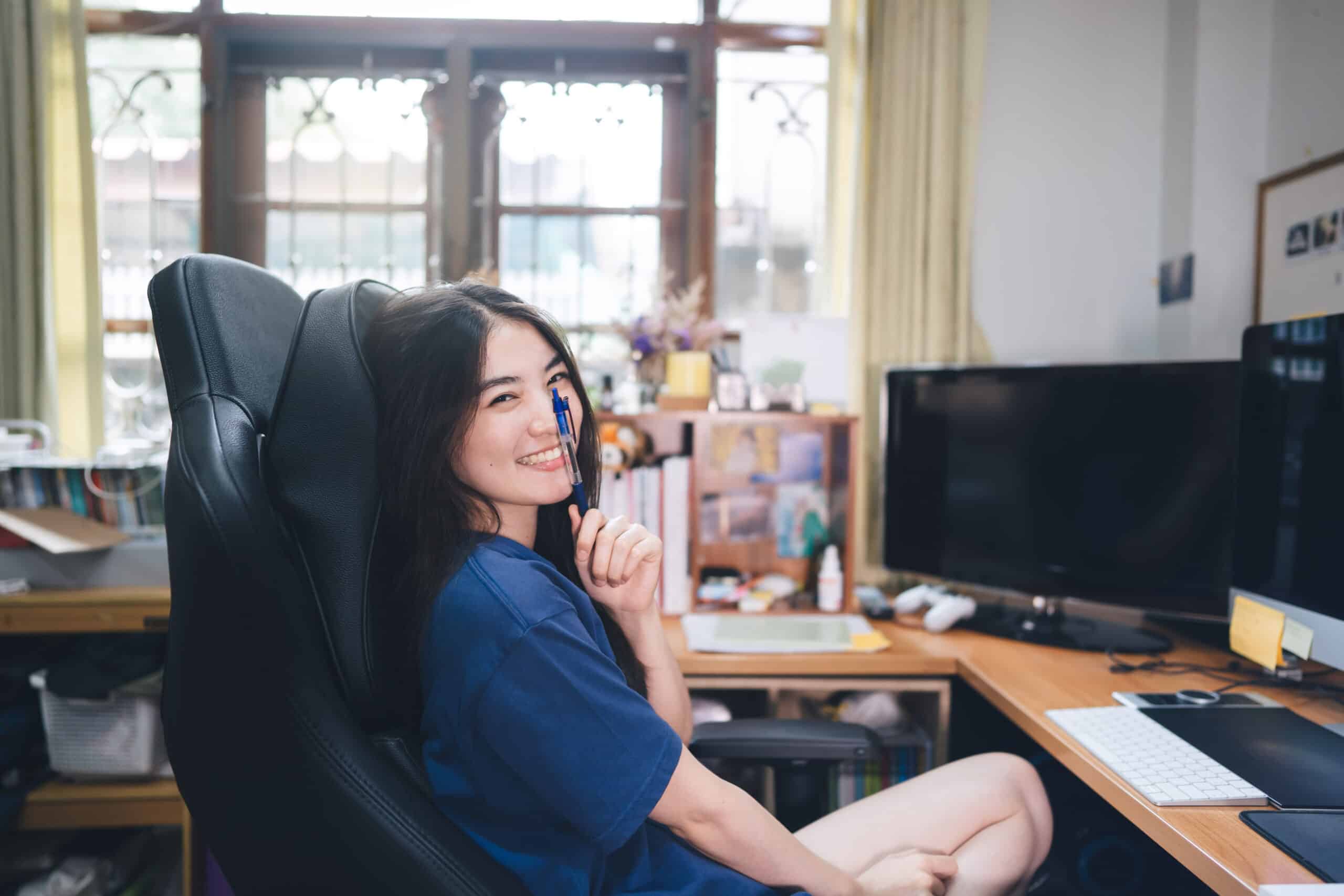
You Are Your Own Boss: Be a Good One
We’re inundated with a lot of messaging around success; to hold yourself against any standard or specific image of “balance” is to push yourself down and set yourself up for misery. Theodore Roosevelt said “comparison is the thief of joy” and this has been no more applicable than in a performative digital age when you can compare yourself to anyone with an online presence, always ready to find yourself lacking.
Here’s how to really frame this: only you can do what’s good for you. No one else had exactly your same upbringing, education, training, challenges or triumphs. These tips are varied and not required, they’re suggestions on how to create healthy, sustainable boundaries, and put into practice some little workflow efficiency tricks when your kind of work is amorphous and capable of creeping into any open spot. When the pressure is on you to self-manage. These tips are not a blanket decree of what works for me will work for you, they may only serve as a jumping off point for whatever does.
The one piece I do think may prove universal is how balance is about being fully present in the moment you’re living. Handle whichever ball you’re holding, and let it go when it’s time to catch the next. Just remember, as a freelancer, you work for yourself first and the client second. Don’t abuse your one employee. Give yourself resources and untethered downtime. Build yourself up, instead of grinding yourself down.
